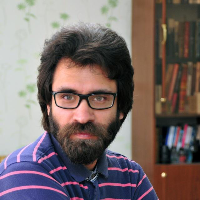Analysis of Interwoven Times in Memorial Photography from the Perspective of Bergson and Freud
Memorial Photography are a variety of photographs related to the dead and the lost, created in a variety of forms and keeping their memory alive in the minds of the survivors by associating the lived experiences of the people with the survivors. which are made personal and unique by memorial objects. Such photos are displayed along with a memorial item related to the missing person (death or absence) in different ways, in the form of a photo of a statue on the wall or as a necklace pendant, etc. On the other hand, commemorative photos are devoted to the association of secret relationships, feelings and memories and accompany the viewer to achieve an understanding of the commemorative object attached to the photo in the continuity of time. In some types of such photographs, such as photographs of objects, a unique perceptual experience is created between the image of the absent person (from the past) and the remembered object (in the present), such as a part of the absent person’s hair or even a brooch. and the concept of time against it is understood in the form of “past-now”. This means that for a particular audience in the face of these images, the past is in continuity with the present, leading to a different understanding of meaning from the present moment and transforming the familiar mindset of ordinary linear time. Confronting memorial photography causes change and evolution in the perception of the lived experience of a person in the context of time, In terms of this issue, Henri Bergson has very important opinions about how time and memory work and its relationship with photography. Twentieth-century French philosopher Henri Bergson interprets time as constantly transformable and continuous matter, and for this feature, he uses the term: “ Duration” .The main question, however, is whether Memorial Photography can be in line with such a notion of time from Bergson’s point of view, as well as the notion of mourning for Sigmund Freud in the face of the loss of a loved one? Therefore, in the present study, to reach the correct answer to this question, on the one hand, it relies on the views of Henry Bergson, who interprets time as a continuous truth (Duration). Duration here means that time cannot be separated and divided into past, present and future. Bergson believes that what we understand from time is the flow and sequence of states that are interwoven, so the long term is considered a kind of quality time that is lived inside the human being at this moment and cannot be thought about. On the other hand, relying on the theories of Sigmund Freud, who provided precise definitions about concepts such as loss, mourning, and idolatry, which are very important in the analysis of memorial photos and the meaning of these types of works. Regarding mourning, he consider it as a reaction to the loss of a loved one or the loss of that which, in an abstract way, replaces him. Therefore, when a person loses a loved one, he experiences grief, which implies a state of incapacity and the lack of ability to choose a new subject or object for affection. In idolatry theory, a person who suffers loss seeks a replacement for absence. For this reason, an alternative is chosen over this lack, which is chosen consciously by the individual. In this process, the bereaved person directs his emotional attachments to the memory object (substitute object) that consoles him for this loss. These objects are not only material and physical objects, but the bereaved person preserves them to express narratives of personal memory that replace that loss. But after some time, over time, his relationship and attachment with the object is cut off and he accepts the truth. In this research, some types of memorial photos are studied in an analytical way and based on the opinions of Henri Bergson (in the problem of defining entangled times) and Sigmund Freud (in the mourning process). 10th and we come to the conclusion that there is an effect and a sign of the past in the memorial photos, which in addition to an idol-like function in the mourning process, also have a kind of transformable and conceptual timing. Because the meaning of these signs has undergone a transformation through the time (Duration) and causes a transformation in the perception of the lived experience of a person through Duration’s interpretation of the concept of time.
- حق عضویت دریافتی صرف حمایت از نشریات عضو و نگهداری، تکمیل و توسعه مگیران میشود.
- پرداخت حق اشتراک و دانلود مقالات اجازه بازنشر آن در سایر رسانههای چاپی و دیجیتال را به کاربر نمیدهد.



